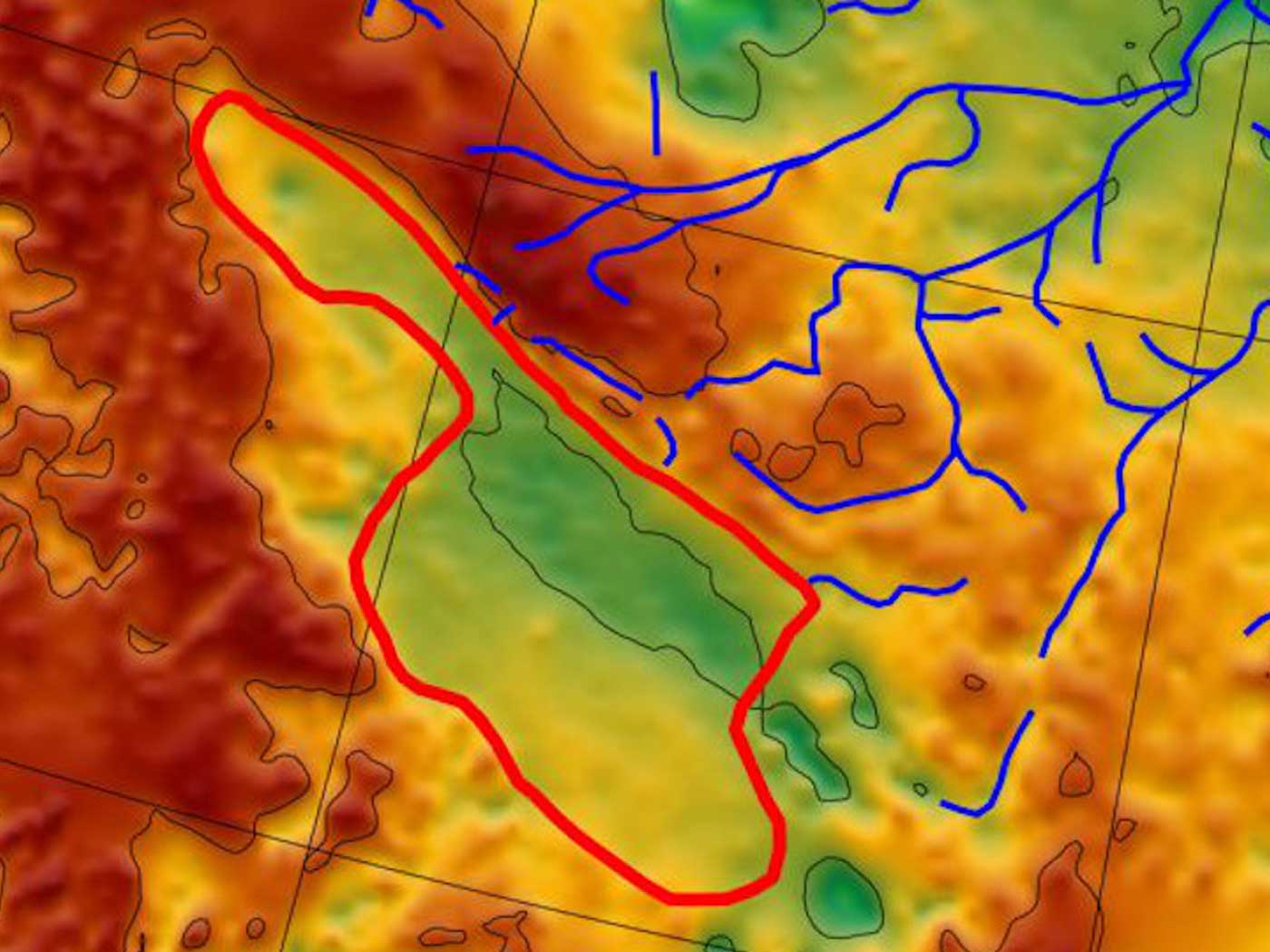The origin of the ice age has greatly perplexed uniformitarian scientists. Much cooler summers and copious snowfall are required, but they are inversely related, since cooler air is drier. It is unlikely cooler temperatures could induce a change in atmospheric circulation that would provide the needed moisture. As a result, well over 60 theories have been proposed. Charlesworth states: 1
"Pleistocene phenomena have produced an absolute riot of theories ranging 'from the remotely possible to the mutually contradictory and the palpably inadequate.'"
A uniformitarian ice age seems meteorologically impossible. The necessary temperature drop in Northern Canada has been established by a sophisticated energy balance model over a snow cover. Summers must be 10 degrees to 12 degrees C cooler than today, even with twice the normal winter snowfall. 2
The Milankovitch mechanism, or the old astronomical theory, has recently been proposed as the solution to the problem. Computer climate simulations have shown that it could initiate an ice age, or at least glacial/interglacial fluctuations. However, an in-depth examination does not support this. The astronomical theory is based on small changes in solar radiation, caused by periodic shifts in the earth's orbital geometry. It had been assumed too weak to cause ice ages by meteorologists, until the oscillations were "statistically" correlated with oxygen isotope fluctuations in deep-sea cores. The latter cycles are believed related mostly to glacial ice volume, and partially to ocean paleotemperature, although the exact relationship has been controversial. The predominant period from cores was correlated to the 100,000-year period of the earth's eccentricity, which changes the solar radiation at most 0.17% 3 This is an infinitesimal effect. Many other serious problems plague the astronomical theory. 4, 5 Although models can test causal hypotheses, Bryson says they ". . . are not sufficiently advanced, nor is our knowledge of the required inputs, to allow for climatic reconstruction. . . ." 6
The climate change following the Genesis Flood provides a likely catastrophic mechanism for an ice age. The Flood was a tremendous tectonic and volcanic event. Large amounts of volcanic aerosols would remain in the atmosphere following the Flood, generating a large temperature drop over land by reflecting much solar radiation back to space. Volcanic aerosols would likely be replenished in the atmosphere for hundreds of years following the Flood, due to high post-Flood volcanism, which is indicated in Pleistocene sediments. 7 The moisture would be provided by strong evaporation from a much warmer ocean, following the Flood. The warm ocean is a consequence of a warmer pre-Flood climate and the release of hot subterranean water during the eruption of "all the fountains of the great deep" (Genesis 7:11). The added quantity of water must have been large to cover all the pre-Flood mountains, which were lower than today. Evaporation over the ocean is proportional to how cool, dry, and unstable the air is, and how fast the wind blows. 8 Indirectly, it is proportional to sea surface temperature. A 10 degree C air-sea temperature difference, with a relative humidity of 50%, will evaporate seven times more water at a sea surface temperature of 30 degrees C than at 0 degrees C. Thus, the areas of greatest evaporation would be at higher latitudes and off the east coast of Northern Hemisphere continents. Focusing on northeast North America, the combination of cool land and warm ocean would cause the high level winds and a main storm track to be parallel to the east coast, by the thermal wind equation. 9 Storm after storm would develop near the eastern shoreline, similar to modern-day Northeasters, over the continent. Once a snow cover is established, more solar radiation is reflected back to space, reinforcing the cooling over land, and compensating the volcanic lulls.
The ice sheet will grow as long as the large supply of moisture is available, which depends upon the warmth of the ocean. Thus, the time to reach maximum ice volume will depend upon the cooling time of the ocean. This can be found from the heat balance equation for the ocean, with reasonable assumptions of post-Flood climatology and initial and final average ocean temperatures. However, the heat lost from the ocean would be added to the atmosphere, which would slow the oceanic cooling with cool summers and warm winters. The time to reach maximum ice volume must also consider the heat balance of the post-Flood atmosphere, which would strongly depend upon the severity of volcanic activity. Considering ranges of volcanism and the possible variations in the terms of the balance equations, the time for glacial maximum ranges from 250 to 1300 years. 10
The average ice depth at glacial maximum is proportional to the total evaporation from the warm ocean at mid and high latitudes, and the transport of moisture from lower latitudes. Since most snow in winter storms falls in the colder portion of the storm, twice the precipitation was assumed to fall over the cold land than over the ocean. Some of the moisture, re-evaporated from non-glaciated land, would end up as snow on the ice sheet, but this effect should be mostly balanced by summer runoff. The average depth of ice was calculated at roughly half uniformitarian estimates. The latter are really unknown. As Bloom states, "Unfortunately, few facts about its thickness are known . . . we must turn to analogy and theory. . . ." 11
The time to melt an ice sheet at mid-latitudes is surprisingly short, once the copious moisture source is gone. It depends upon the energy balance over a snow or ice cover. 12 Several additional factors would have enhanced melting. Crevassing would increase the absorption of solar radiation, by providing more surface area. 13 The climate would be colder and drier than at present, with strong dusty storms that would tend to track along the ice sheet boundary. The extensive loess sheets south of and within the periphery of the past ice sheet attest to this. Dust settling on the ice would greatly increase the solar absorption and melting. A mountain snowfield in Japan was observed to absorb 85% of the solar radiation after 4000 ppm of pollution dust had settled on its surface. 14
Earth scientists believe there were many ice ages—perhaps more than 30—in regular succession during the late Cenozoic based on oxygen isotope fluctuations in deep-sea cores. 15 However, the ocean results have many difficulties, and sharply conflict with the long-held four ice-age continental scheme. Before the early 20th century, the number of ice ages was much debated. Some scientists believed in only one ice age, but the sediments are complex and have evidence of anywhere from one to four, or possibly more till sheets, separated by non-glacial deposits. Four ice ages became established mainly from gravel terraces in the Alps, and reinforced by soil stratigraphy. Much has been learned about glacial behavior and sedimentation since then. The Alps terraces are now viewed as possibly ". . . a result of repeated tectonic uplift cycles—not widespread climatic changes per se." 16 Variously weathered "interglacial soils" between till sheets are complex, and practically always have the top organic horizon missing. It is difficult to know whether they are really soils. 17 Besides, the rate of modern soil formation is unknown, and depends upon many complex factors, like the amount of warmth, moisture, and time. 18 Therefore, the number of glaciations is still an open question.
There are strong indications that there was only one ice age. As discussed previously, the requirements for an ice age are very stringent. The problem grows to impossibility, when more than one is considered. Practically all the ice-age sediments are from the last, and these deposits are very thin over interior areas, and not overly thick at the periphery. Till can sometimes be laid down rapidly, especially in end moraines. Thus the main characteristics of the till favor one ice age. Pleistocene fossils are rare in glaciated areas, which is mysterious, if there were many interglacials. Practically all the megafaunal extinctions were after the last—a difficult problem if there was more than one.
One dynamic ice age could explain the features of the till along the periphery by large fluctuations and surges, which would cause stacked till sheets. 19 Organic remains can be trapped by these oscillations. 20 Large fluctuations may be caused by variable continental cooling, depending upon volcanic activity. In addition, most of the snow and ice should accumulate at the periphery, closest to the main storm tracks. Large surface slopes and warm basal temperatures at the edge are conducive to rapid glacial movement. 21
In summary, the mystery of the ice age can be best explained by one catastrophic ice age as a consequence of the Genesis Flood.
1 Charlesworth, J.K., 1957, The Quaternary Era, Vol. 2, London, Edward Arnold, p. 1532.
2 Williams, L.D., 1979, "An Energy Balance Model of Potential Glacierization of Northern Canada," Arctic and Alpine Research, v. 11, n. 4, pp. 443-456.
3. Fong, P., 1982, "Latent Heat of Melting and Its Importance for Glaciation Cycles," Climatic Change, v. 4, p. 199.
4 Oard, M.J., 1984, "Ice Ages: The Mystery Solved? Part 2: The Manipulation of Deep-Sea Cores,"Creation Research Society Quarterly, v. 21, n. 3, pp. 125-137.
5 Oard, M.J., 1985, "Ice Ages: The mystery Solved? Part 3: Paleomagnetic Stratigraphy and Data Manipulation,"Creation Research Society Quarterly, v. 21, n. 4, pp. 170-181.
6 Bryson, R.A., 1985, "On Climatic Analogs in Paleoclimatic Reconstruction," Quaternary Research, v. 23, n. 3, p. 275.
7 Charlesworth, Op. Cit., p. 601.
8 Bunker, A.F., 1976, "A Computation of Surface Energy Flux and Annual Air-Sea Interaction Cycles of the North Atlantic Ocean," Monthly Weather Review, v. 104, n. 9, p. 1122.
9 Holton, J.R., 1972, An Introduction to Dynamic Meteorology, New York, Academic Press, pp. 48-51.
10 Oard, M.D., "An Ice Age Within the Biblical Time Frame," Proceedings of the First International Conference on Creationism, Pittsburgh (in press).
11 Bloom, A.L., 1971, "Glacial-Eustatic and Isostatic Controls of Sea Level," in K.K. Turekian, ed., Late Cenozoic Glacial Ages, New Haven, Yale University Press, p. 367.
12 Patterson, W.S.B., 1969, The Physics of Glaciers, New York, Pergamon, pp. 45-62.
13 Hughes, T., 1986, "The Jakobshanvs Effect:" Geophysical Research Letters, v. 13, n. 1, pp. 46-48.
14 Warren, S.G. and W.J. Wiscombe, 1980, "A Model for the Spectral Albedo of Snow. II. Snow Containing Atmospheric Aerosols," Journal of the Atmospheric Sciences, v. 37, n. 12, p. 2736.
15 Kennett, J.P. 1982, Marine Geology, New Jersey, Prentice-Hall, p. 747.
16 Eyles, N., W.R. Dearman and T.D. Douglas, 1983, "Glacial Landsystems in Britain and North America" in N. Eyles, ed., Glacial Geology, New York, Pergamon, p. 217.
17 Valentine, K. and J. Dalrymple, 1976, "Quarternary Buried Paleosols: A Critical Review," Quarternary Research, v. 6, n. 2, pp. 209-222.
18 Boardman, J., 1985, "Comparison of Soils in Midwestern United States and Western Europe with the Interglacial Record," Quaternary Research, v. 23, n. 1, pp. 62-75.
19 Paul, M.A., 1983, "The Supraglacial Landsystem," in N. Eyles, ed., Glacial Geology, New York, Pergamon, pp. 71-90.
20 Eyles, Dearman and Douglas, Op. Cit., p. 222.
21 Patterson, Op. Cit., p. 63-167.
* Mr. Oard is a meteorologist with the U.S. Weather Bureau, Montana.



















